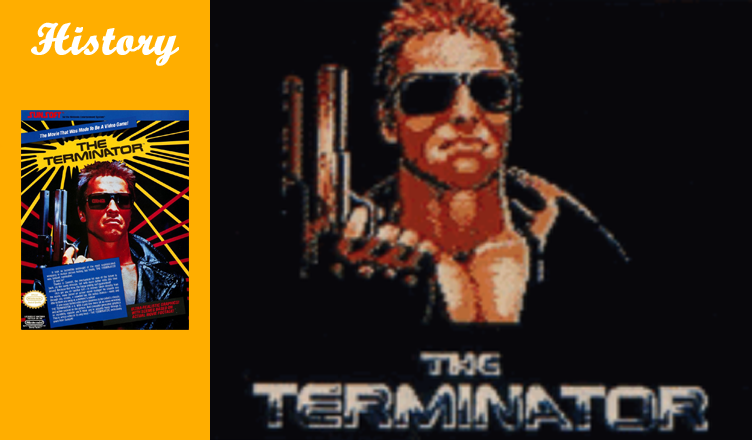On August 10th, 1990, Sunsoft released a game called Rough World/ラフワールド (known as [rʌf] WORLD on the game’s title)for the Famicom in Japan. When it was released in the US a month later, it was renamed as Journey To Silius. The main differences between the two versions are that the main character looks a bit different. Other than that, the game is a straightforward action platformer.

The game wasn’t always meant to be called Journey to Silius, though. In late 1988, Richard Robbins (president of Sunsoft of America) acquired the license for James Cameron’s 1984 hit movie The Terminator. The license was acquired from Creative Licensing Corporation (CLC) and its founder Rand Marlis. Even though the movie was four years old at the time they felt the license still had some life in it. And of course, four years later that was shown to be true when Terminator 2: Judgement Day became a very big hit.
The game was then developed by Sunsoft in Japan with no design input from the US office. The team that developed the game was led by two people nicknamed Vegas and Chow-Mu-Sow. The latter one is Cho Musou while the first person’s true identity isn’t known. The programming team was headed by veterans Masahito Nomura (Atlantis no Nazo, Dead Zone, Ufouria: The Saga) and Hiroaki Higashiya (Atlantis no Nazo, Ripple Island, Batman: The Video Game), who had worked at Sunsoft since the early Famicom days. On the sound team was sound programmers Nobuyuki Hara and Shinichi Seya, who coded most of the great Sunsoft music on the Famicom/NES. The composer was Naoki Kodaka, who composed most of the company’s greatest music between 1986 and 1996. Besides the unknown Vegas are no less than ten more unknown nicknames in the team and special thanks.
At the Las Vegas WCES Show in 1989, Sunsoft of America unveiled The Terminator for the NES. A cool flyer with the iconic picture of Arnold Schwarzenegger as the T-800 was shown along with previews of the game. Artist Todd Papaleo, who worked at Sunsoft from 1988 to 1989, sent me a drawing he had been assigned to draw of T-800. It was for a promo video to be shown at CES.
The game had not been in development for very long and the promo video only featured the games title screen and some cutscenes. I was sent a tape with Sunsoft’s promo videos from the show, and here it is – the only surviving video footage of Sunsoft’s The Terminator for the NES.
Special thanks for Richard Robbins for providing us this video.
Later that year, a finished build of the game was presented for Rand Marlis at CLC. Rand tells me they revoked the license because the game did not follow the plot of the original film. The movie is mainly set in the past while the game is set in the future where the artificial intelligence Skynet has taken control of the Earth with an army of robots. Rand tells me it’s unusual to not show them anything until a product is finished. It’s more common to first come to CLC with a concept to show what you are going to do and to see if it is within the parameters they would accept.
Somehow, the Terminator rights were later picked up by Canadian developer Radical Entertainment, who would eventually make a released game for the series in 1992. Virgin Games also had plans for a Terminator NES game in between Sunsoft and Radical’s attempt, if a 2006 interview with programmer Gregg Tavares is correct.

So Sunsoft now decided to rename the game and change out all its cutscenes instead of scrapping it. At first the game was called Operation S.S.S. for the US market. It was listed as Operation S.S.S. as late as WCES 1990, and was scheduled for a June 1990 release. Sometime after this, the name was changed once again to Journey to Silius. It was released as Rough World/ラフワールド in Japan and Journey to Silius in Europe and North America.











